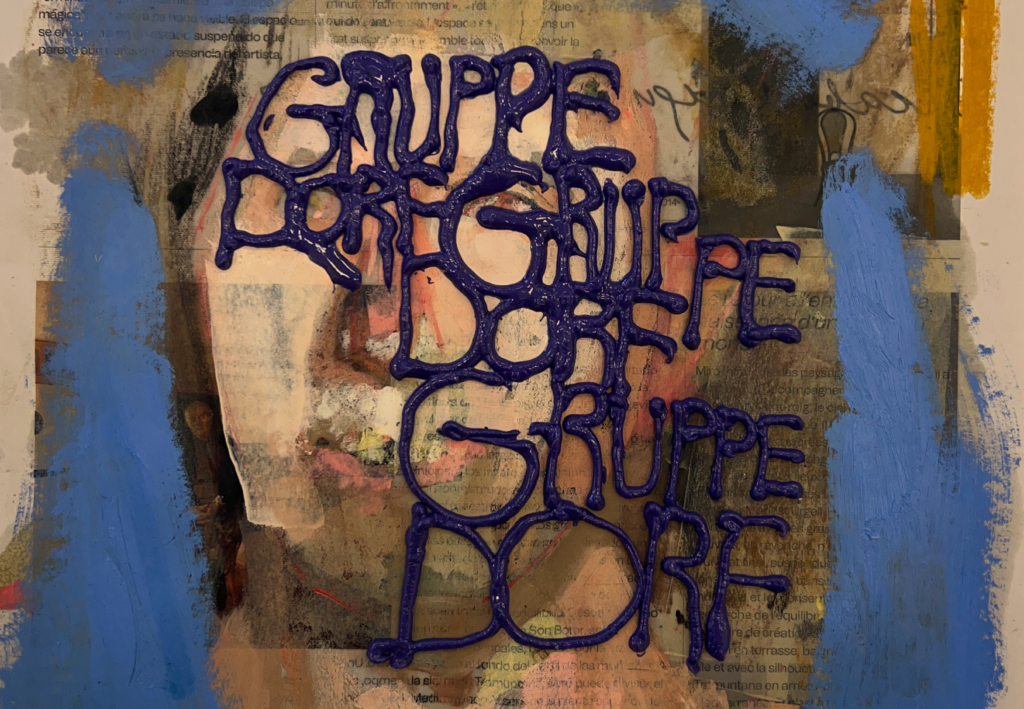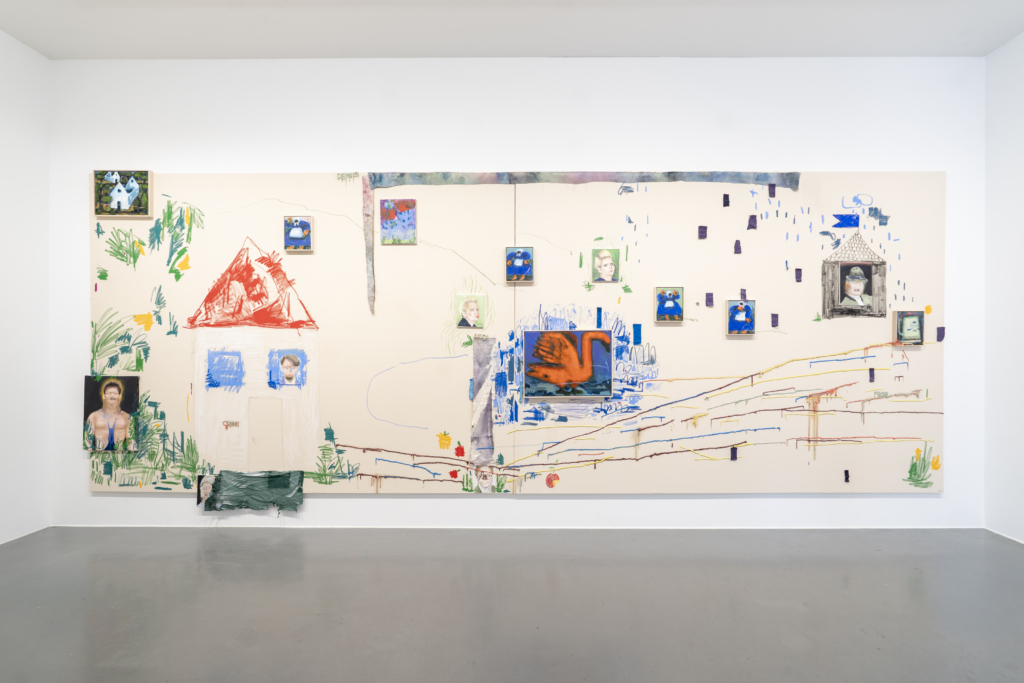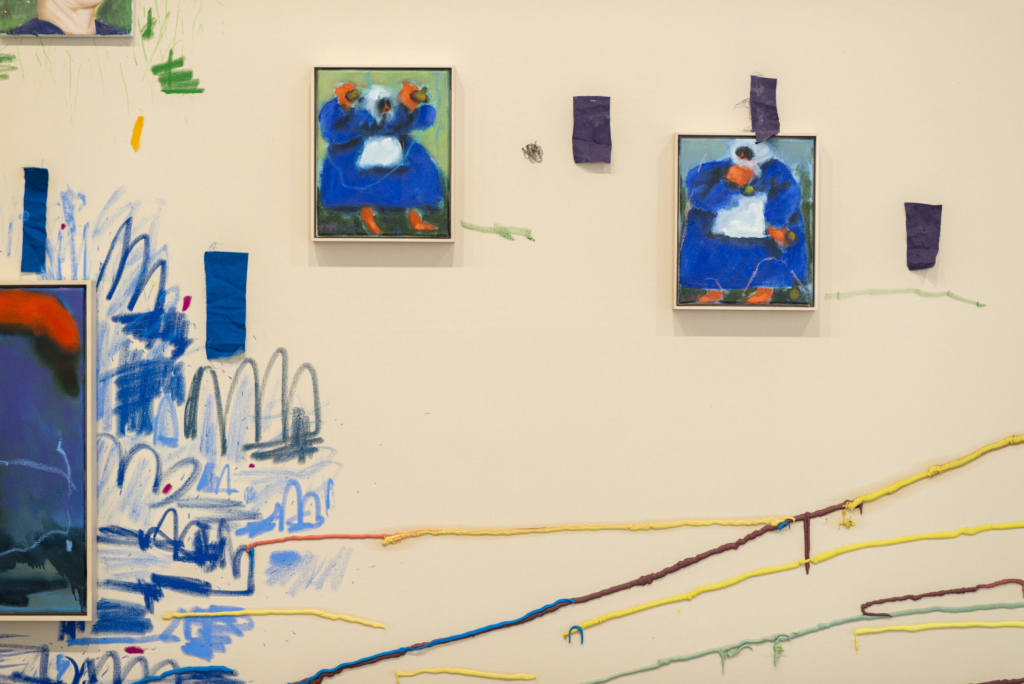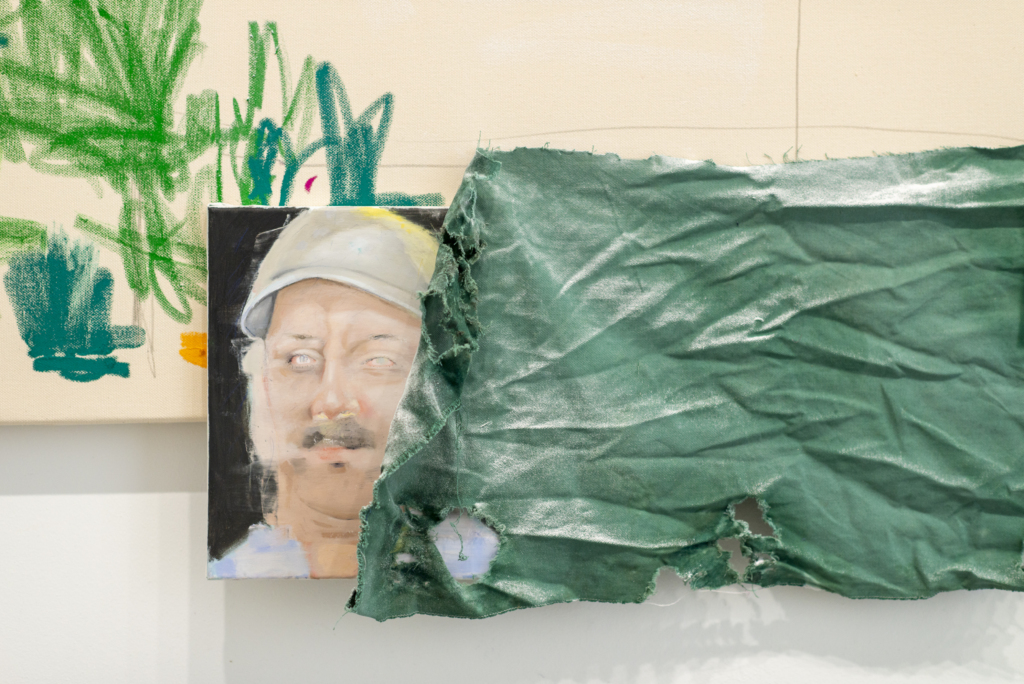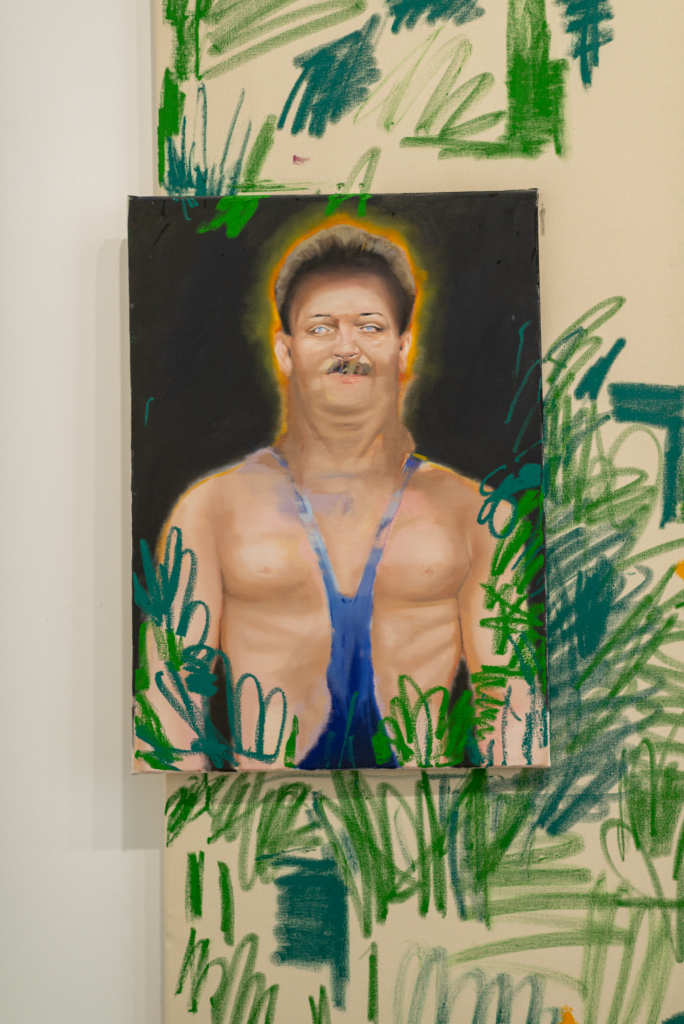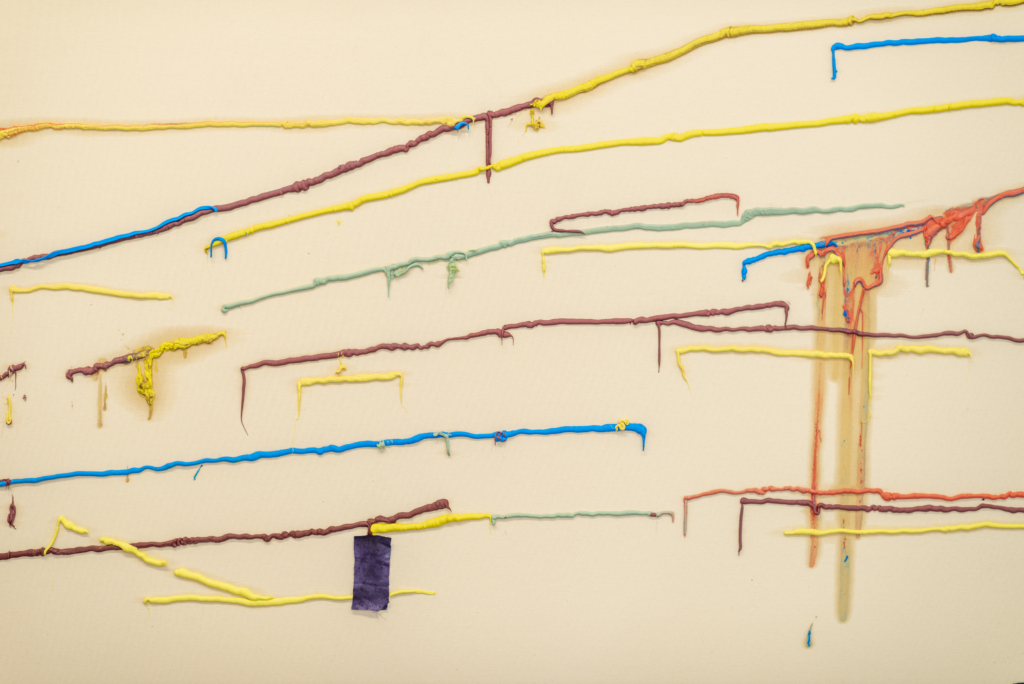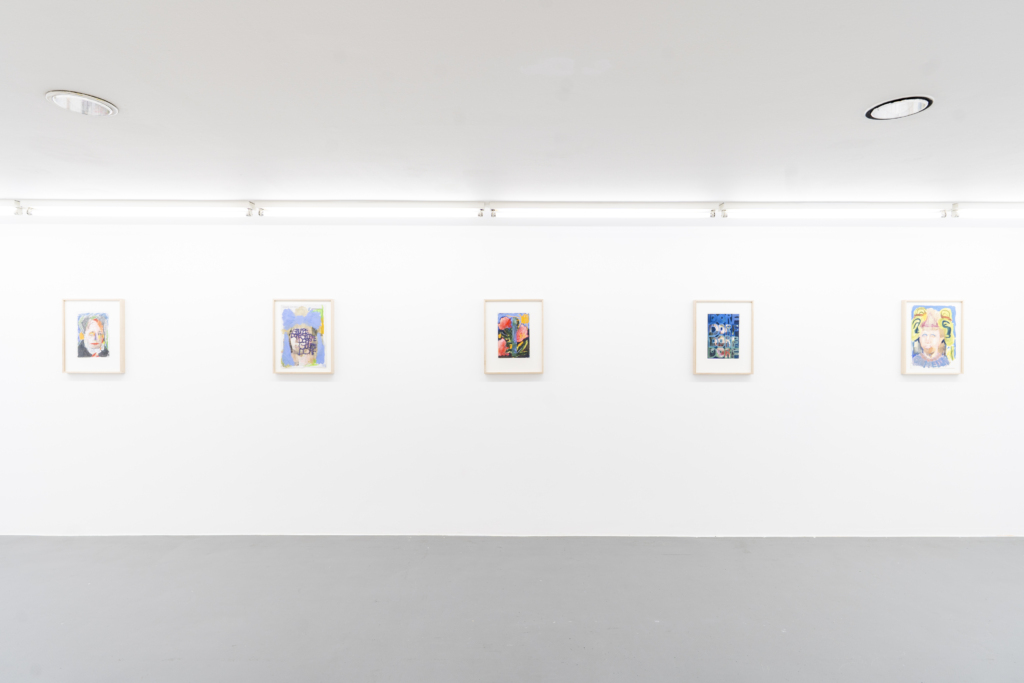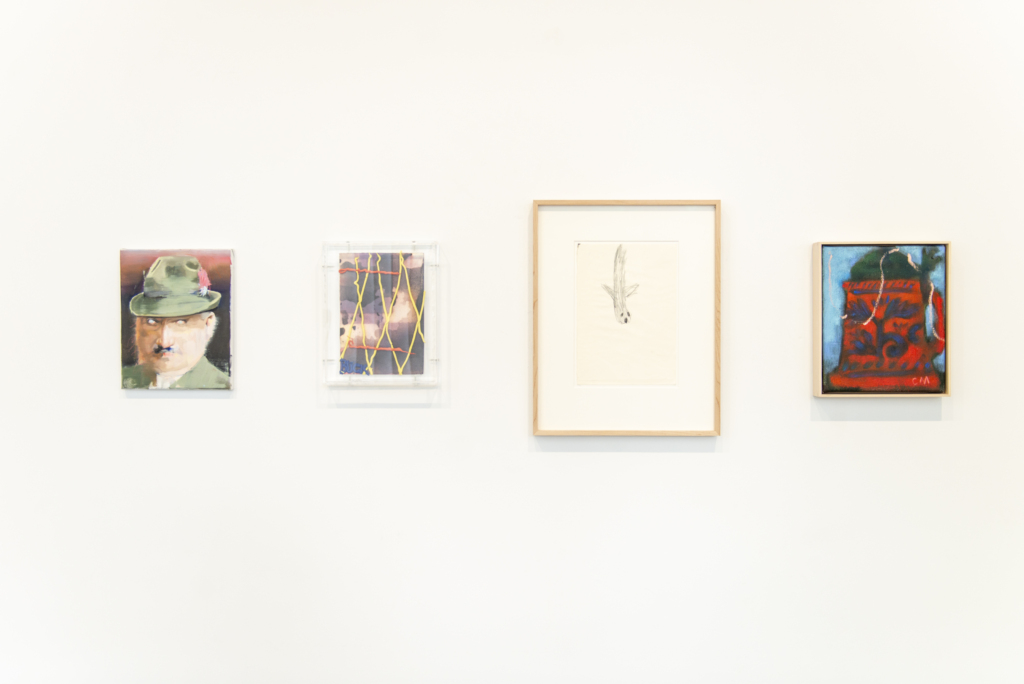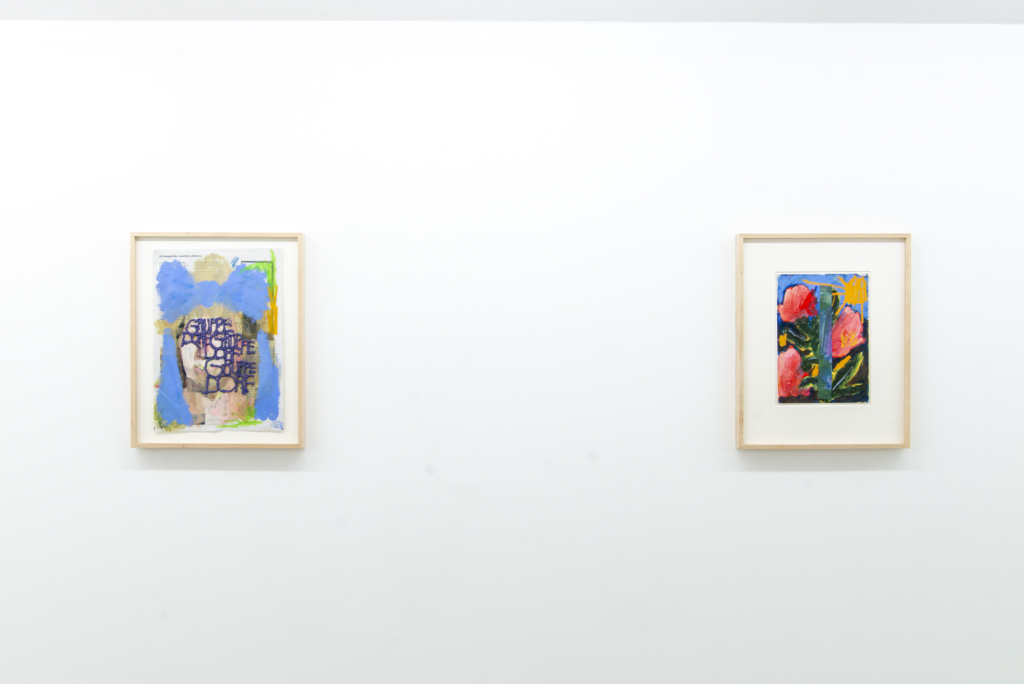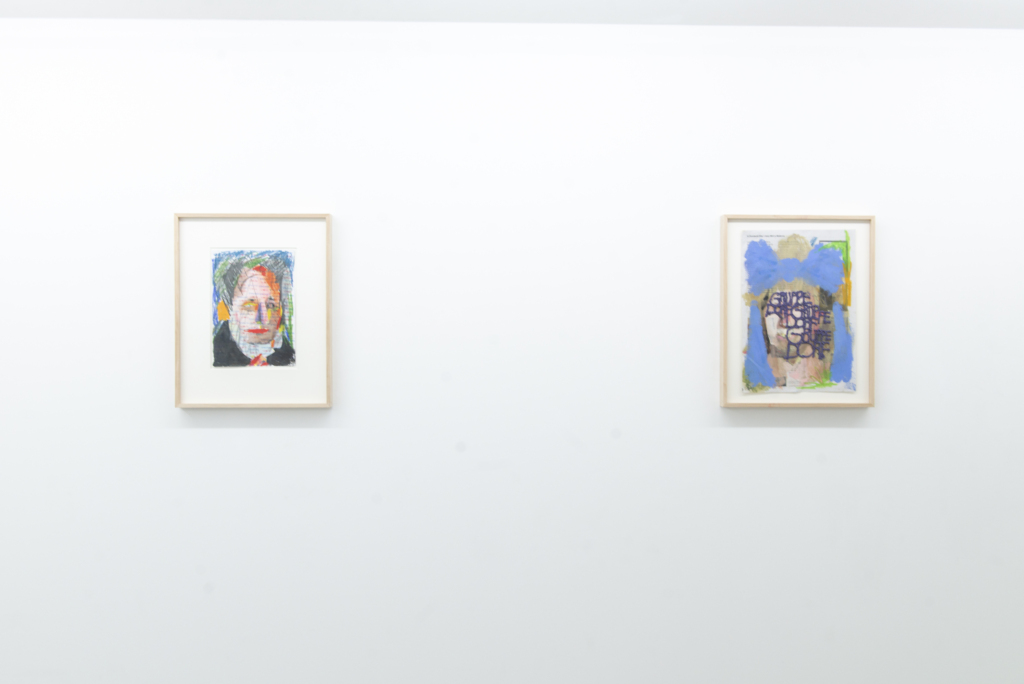The matter matter matters begins where two dominant narratives of artistic practice intersect: that of the artwork as the expression of an autonomous subject, and that of the village as a place of cultural marginality. In the exhibition at the Kunstverein Friedrichshafen, the group Dorf intertwines these two threads into a double questioning: How can artistic authorship be conceived beyond singular attribution? And what significance does the rural space gain when it is no longer understood as peripheral, but as a productive surface of artistic practice?
By presenting both individual paintings and collaborative works in the exhibition, Dorf makes visible how artistic production can be understood not as a solitary achievement, but as fragmentation and entanglement. Just as the image of the “village” is deconstructed as backward, so too is the notion of artistic authorship broken open: it becomes a shared, relational structure, operating in the tension between individual impulses and social conditions. The exhibition thus creates an interface between personal artistic positions, collective practice, and the institutional frameworks that generate art. The subject in painting appears less as an isolated originator and more as the result of processes that are social, economic, and aesthetic in nature.
On the ground floor of the Kunstverein, a fictional marketplace is staged – house facades drawn in oil pastel form the backdrop, in whose windows and walls works by the four artists Andi Fischer, Michael Guenzer, Conny Maier, and Dennis Buck are displayed. The houses serve as carriers for their individual positions: paintings, drawings, sculptural elements that each bear distinct artistic signatures – yet in the shared space are renegotiated and brought into relation with one another. The marketplace thus becomes an image of a shared artistic public, in which individual expression and collective structure are not in contradiction but mutually dependent. At the same time, the marketplace scene functions as a subtle critique of exhibition practices themselves. The white cube, traditionally thought of as a neutral presentation space, appears in this configuration as porous, inhabited, socially charged. The space is no longer seen as an “ideologically neutral container,” but as a place that reveals “who is exhibited, how, and why.”[1] The marketplace is not a romantic projection into the past, but a functional model of thought: in its disorder, its public character, and its social dynamics, it becomes a counter-figure to institutional exclusivity. The exhibition thus also challenges the self-conception of the Kunstverein and raises the question of what kind of spaces are needed today to engage with art beyond market-centered or urban-coded relevance.
On the upper floor of the exhibition, the perspective shifts: here, collaboratively produced works by the group Dorf are presented – painterly works in which it is no longer clearly recognizable whose trace, line, or intervention belongs to whom. Authorship is shared, shifted, dissolved; not towards anonymity, but towards a relational, processual practice. These forms of collaborative painting resist the notion of a finished, autonomous subject as the origin of the work. In its place comes an unstable, situational concept of authorship that is reshaped with each gesture and intervention. The painterly gesture is no longer readable as expression, but as performative act; as address, not as signature: “Painting does not express subjectivity, it produces it.”[2]
This re-coding becomes visible in Dorf’s collaborative works. Different painterly languages overlap. This happens not as compromise, but as friction, as tension. Painting itself becomes the site of negotiation, just like the public marketplace.[3] The image is not the end product of an intention, but the result of an open, situational movement. The matter matter matters refuses clear attributions: neither the village nor the work, neither the place nor the subject can be definitively defined here. Instead, the exhibition creates spaces in which difference becomes productive. The marketplace below and the collective upstairs are not opposites, but two perspectives on the same question: How can art be thought, shown, and made when it no longer originates from a center, but from many?
Dorf was founded in 2017 by Andi Fischer, Michael Guenzer, Conny Maier, and Dennis Buck. In today’s pop culture, the village and the province are often portrayed as quaint, idyllic bubbles, cut off from global affairs— a stereotype that DORF approaches with humor and self-irony in their collaborative works, while also reflecting on their own biographies.
[1] Brian O’Doherty: Inside the White Cube. The Ideology of the Gallery Space, University of California Press, 1999, p 14.
[2] Claire Bishop: Artificial Hells: Participatory Art and the Politics of Spectatorship, Verso, 2012, p. 11. Bishop describes this process as a “redistribution” of authorship: temporal, spatial, collective.
[3] Claire Bishop: Artificial Hells: Participatory Art and the Politics of Spectatorship, Verso, 2012, p. 11.

